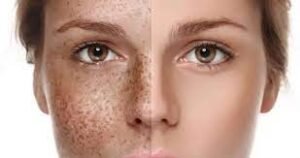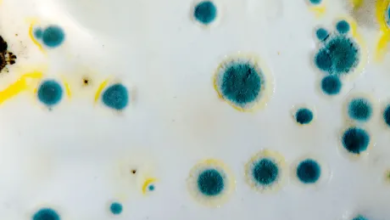
Understanding Dermal Pigmentation
Dermal Pigmentation in Abu Dhabi refers to the discoloration of the skin due to the excess production of melanin, the pigment responsible for skin color. Managing it effectively requires a comprehensive understanding of its causes and treatment options.
What Is Dermal Pigmentation?
Dermal pigmentation can manifest as dark spots, patches, or overall skin discoloration. These changes can occur in various parts of the body, most commonly on the face, hands, and areas exposed to the sun.
Common Causes and Types
Several factors contribute to dermal pigmentation, including:
- Sun Exposure: Prolonged sun exposure can lead to sunspots and melasma.
- Hormonal Changes: Fluctuations in hormones, especially during pregnancy or with birth control, can trigger pigmentation issues.
- Skin Inflammation: Conditions like acne or eczema can cause post-inflammatory hyperpigmentation.
- Genetics: Some individuals are genetically predisposed to pigmentation disorders.
Initial Assessment
Before diving into treatment, it’s crucial to assess the type and cause of pigmentation.
Identifying the Type of Pigmentation
Different types of pigmentation require different management strategies. Common types include:
- Melasma: Often triggered by hormonal changes.
- Lentigines: Also known as age spots, usually caused by sun damage.
- Post-inflammatory Hyperpigmentation: Resulting from skin injuries or inflammation.

Consulting a Dermatologist
A dermatologist can perform a thorough evaluation, determining the cause and type of pigmentation. They may also recommend a personalized treatment plan.
Effective Skincare Routine
A consistent skincare routine is essential for managing dermal pigmentation.
Cleansing and Exfoliation
- Cleansing: Use a gentle cleanser suitable for your skin type to remove impurities without irritating the skin.
- Exfoliation: Regular exfoliation (2-3 times a week) can help remove dead skin cells, promoting a brighter complexion. Look for products containing AHAs or BHAs.
Sun Protection
One of the most crucial steps in managing dermal pigmentation is protecting your skin from UV rays. Use a broad-spectrum sunscreen with SPF 30 or higher every day, even on cloudy days.
Targeted Treatments
Incorporate products that target pigmentation, such as:
- Vitamin C: An antioxidant that brightens the skin and evens out skin tone.
- Niacinamide: Known for its anti-inflammatory properties and ability to reduce pigmentation.
- Retinoids: Help increase cell turnover and fade dark spots over time.
Moisturization and Hydration
Keeping the skin well-hydrated is essential for maintaining its health. Use a suitable moisturizer to help maintain the skin barrier and prevent dryness, which can exacerbate pigmentation issues.
Professional Treatments
For more severe cases, professional treatments may be necessary.
Chemical Peels
Chemical peels involve applying a solution to the skin that exfoliates the top layers, helping to reduce pigmentation. This treatment can be tailored to suit different skin types and pigmentation concerns.
Laser Therapy
Laser treatments target melanin directly, breaking down pigment deposits. Various types of lasers are available, and a dermatologist can recommend the most suitable one for your skin type.
Microneedling
Microneedling creates tiny injuries in the skin, stimulating collagen production and improving skin texture. This treatment can also help reduce the appearance of pigmentation.
PRP (Platelet-Rich Plasma) Therapy
PRP therapy uses the body’s platelets to promote healing and rejuvenation. It can improve skin tone and texture while helping to reduce pigmentation.
Lifestyle Changes
In addition to skincare and professional treatments, certain lifestyle changes can significantly impact dermal pigmentation.
Diet and Nutrition
A balanced diet rich in antioxidants, vitamins, and minerals can promote skin health. Incorporate fruits and vegetables high in vitamins A, C, and E, as well as omega-3 fatty acids.
Hydration
Adequate hydration is vital for maintaining healthy skin. Drink plenty of water throughout the day to keep your skin hydrated and support overall health.
Stress Management
High stress levels can contribute to skin issues, including pigmentation. Engage in stress-relief activities such as yoga, meditation, or hobbies to promote a healthier lifestyle.
Long-term Management Strategies
Managing dermal pigmentation is an ongoing process that requires commitment.
Regular Dermatological Check-ups
Regular visits to a dermatologist can help monitor your skin’s progress and adjust treatments as needed. This is especially important if you notice any new pigmentation changes.
Consistency in Skincare
Consistency is key when it comes to skincare. Follow your skincare routine diligently and give products time to work. Avoid switching products too frequently.
Monitoring and Adjusting Treatments
Pay attention to how your skin responds to treatments. If you notice any irritation or lack of improvement, consult your dermatologist to make necessary adjustments.
Conclusion
Managing dermal pigmentation effectively requires a multifaceted approach that includes understanding the condition, adopting a consistent skincare routine, considering professional treatments, and making lifestyle changes.
Emphasizing Holistic Management of Dermal Pigmentation
By taking these steps, individuals can achieve significant improvements in their skin tone and texture, leading to healthier and more radiant skin. Remember, patience and commitment are vital in this journey, as managing dermal pigmentation is not a quick fix but a long-term commitment to skin health.



